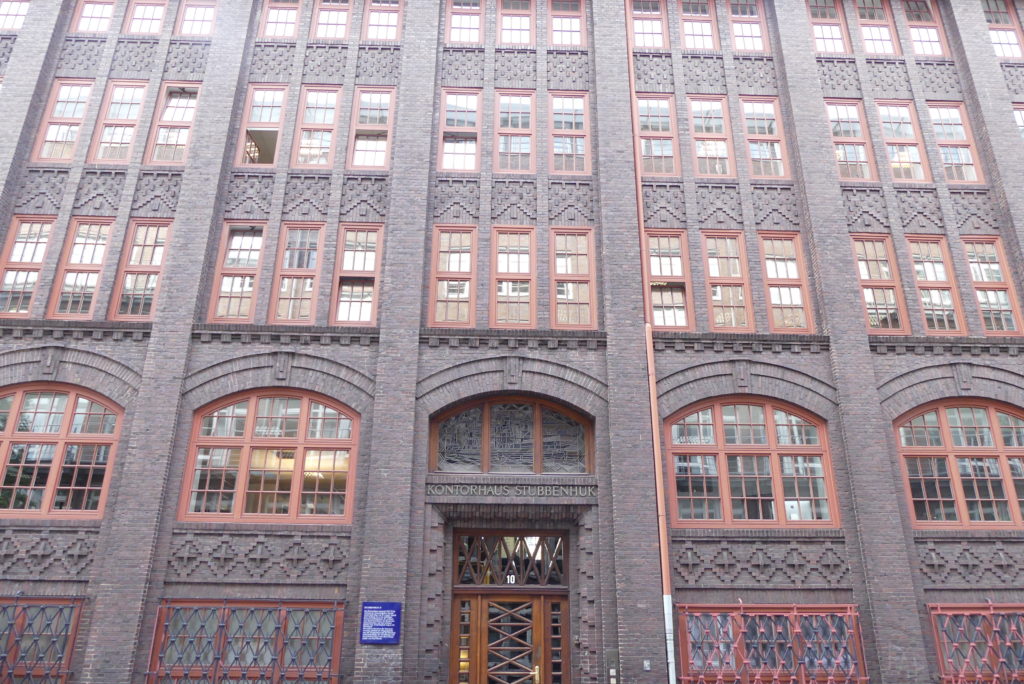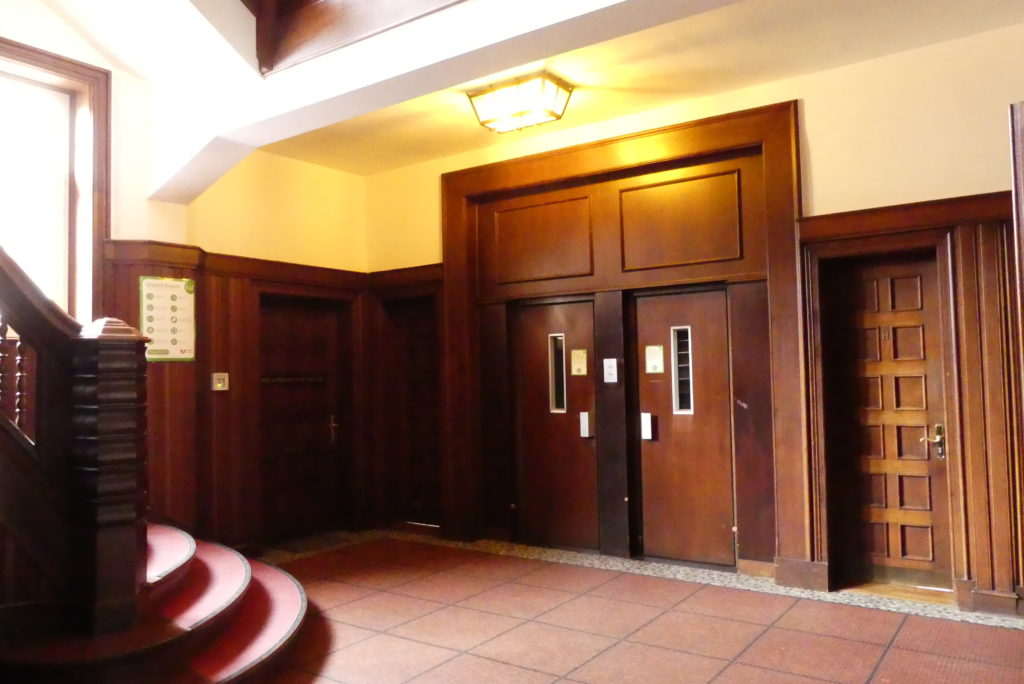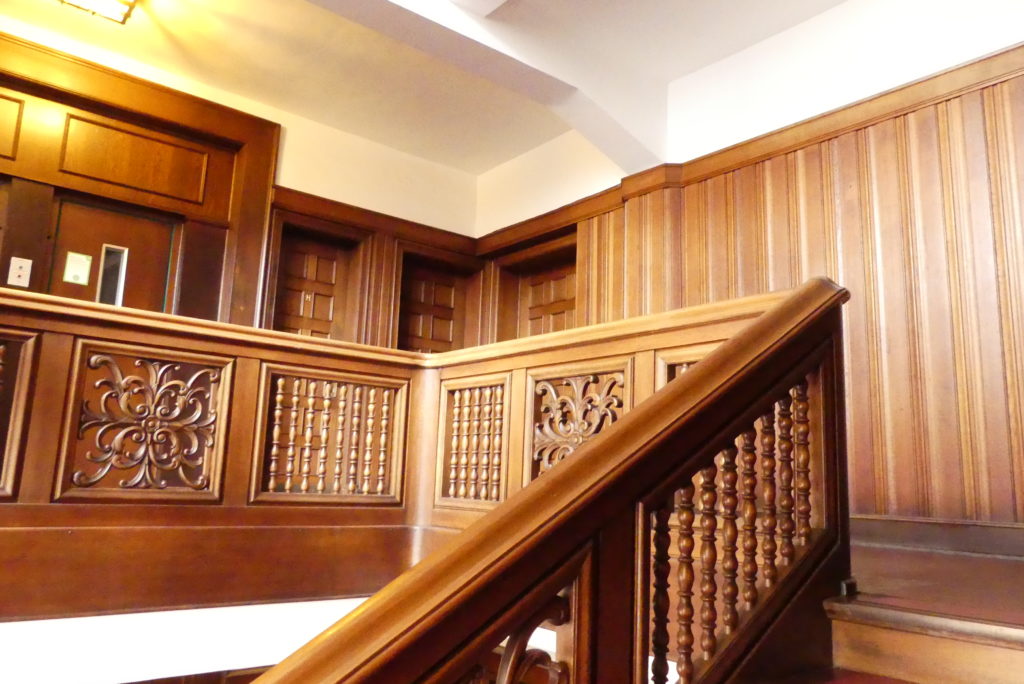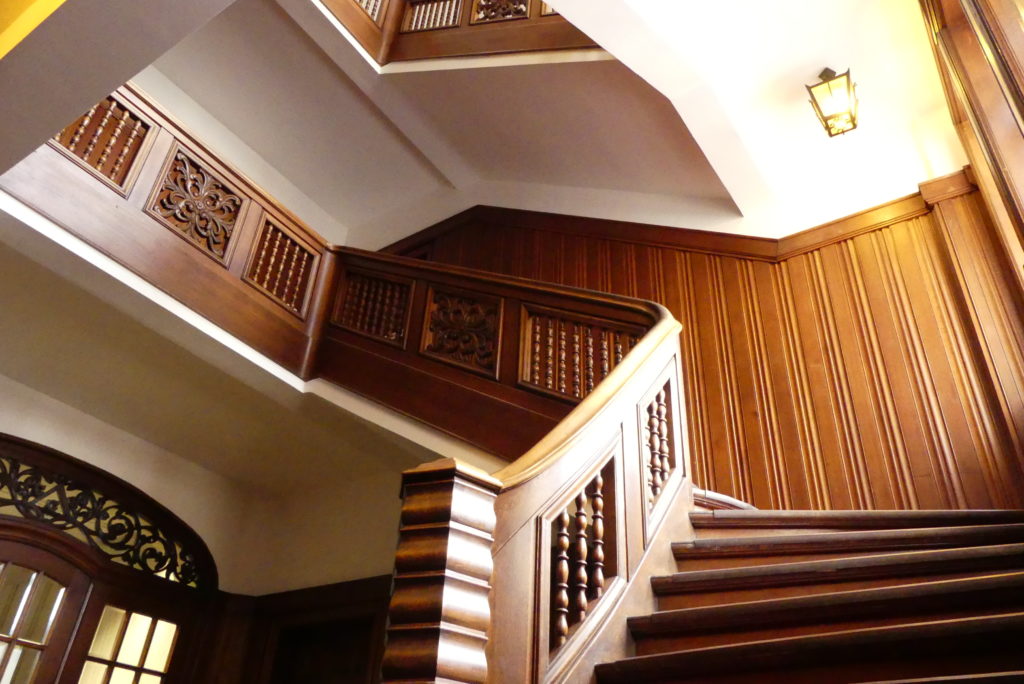Staircase up and Staircase down in the Kontorhaus Stubbenhuk

The last of its kind – at least for my blog of January 2021 – is the counting house Stubbenhuk of the former “Getreideheber-Gesellschaft” (the GHG operated swimming lifters to transfer cereals from seagoing vessels to barges in the Port of Hamburg). This corner building designed by architect Wilhelm Lemm was finished in 1925 and unites different architectural styles. Having survived World War II nearly undamaged, the counting house tends to be overseen due to the futuristic building next to it and appears like a solitary brick block from old times.

The clinker brick decorated facade lets recognize the steel framing construction, represents the way of building from before World War I, while being influenced by the famous Chilehaus. Stepping through the entrance door above which a window prominently displays a glass painting of Paul Wrode, one meets the marble stairs and instantly feels the charme and elegance of this Kontorhaus.

Also, the generous stairwell radiates conservatism: the walls covered with lacustrine limestone and panelled with wood, the steps lined with linoleum, the floors equipped with mosaic tiles and the wooden banisters decorated with ornate carvings. Turned vertical rods alternate with stylised flowers. This pattern also symbolises a turn to the so called “Heimatstil” (the style of the home country).

As a sign of the past, they are subject to tension with the curved block steps at the beginning of the lowest staircase, which hints to style elements of classical modern age. The triple-track staircase rises up around a square eye and offers a starting post on every floor, which arranges the stairwell.
After a visit to the Speicherstadt or a walk to the Elbphilharmonie have a quick look into the Kontorhaus Stubbenhuk and go upstairs for a few minutes.
MY TIP
Clinker Bricks
In Northern Germany and especially in Hamburg you encounter “bricks” nearly at every corner. They form the picture of our and many more Hanseatic Cities. Very often, people mix up clinker bricks and “normal“ bricks. Both of them belong to the type “brick“, but maybe you have already noticed that there are more porous and more solid ones. Clinker bricks are made of e. g. chamotte or feldspars and are fired at around 1,100°C and 1,300°C, so that sintering closes the pores (ordinary brick is fired at around 800°C to 900°C). This leads to the clinker bricks being very durable, as they do not absorb water, which could lead to erosion and blasts due to frozen water. On the other hand, they do not insulate as well as bricks, due to their high density and therefore high thermal conductivity. Depending on its ingredients, the clinker bricks can have different colour shades. It is believed that the name “clinker“ comes from the sound they make when struck together. The one interested in further details: of course, there is a norm for clinker bricks in Germany: DIN 105.
Stairwells and their function(s)
Stairwells are and were not only purpose-build edifices to climb up or go down but are and were places of communication and representation. Searching for impressive and beautiful staircases today, you can find a lot of obstacles, like advertising signs, crowded shopping windows and store doors. Nevertheless, it really is worth the try!
Many of the staircases in Hamburg, especially in the accounting houses, do not let you miss any of their former splendour and decoration. Although the construction of a staircase always means a compromise between the aesthetics and economy as well as between the desires of the investor and the requirements of the architects, we can find many staircases in Hamburg comparable to reception halls – possibly thanks to the eagerness to represent their wealth of the merchants in Hamburg. At the same time, their impressive and power-radiating outsides serve to hide all of the functional parts. Decorations like carved, chiselled or cast plants, flowers and masks made of wood, stone or bronze, arcs, filigree grids, marble or granite distract from the functions of the building.
„Entrees, Foyers and stairwells are representative rooms. They establish the connection between the public street and the semi-public building, they are not outside anymore but not yet inside. Therefore, stairwells do not only fulfil the function task of linking the different floors within the edifice, the mediate, they have a communicative task as places of encounter, as a symbol of movement.”
from „Hamburger Treppenhäuser“ by Allenstein and Pasdzior
Borrow that book from the public libraries of Hamburg Hamburger Bücherhallen, read and admire the pictures! There is a lot to discover! Or simply go on a guided (online) tour with me!
Hamburg Guide Sarah







